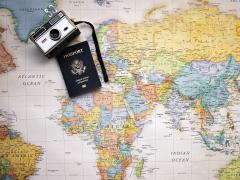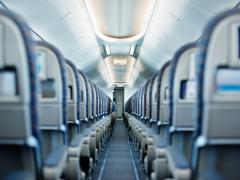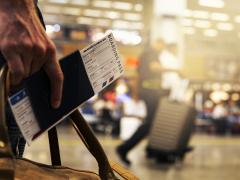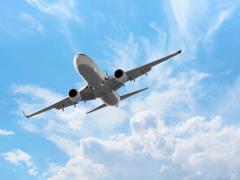How did long-haul air travel shift from a prospect that had travellers fizzing with excitement, to having them filled with dread? Some consumers believe that the ordeal of a long-haul economy-class experience is being used as a stick, intended to drive passengers to spend substantially more on a little bit of comfort they will never get with any economy-class fare.
In the ’90s, long-haul aircraft had adequately and acceptably-sized economy-class seats with reasonably comfortable cushioning and a recline that did not destroy the knees of the person sitting behind you. Leg-room was not really an issue excepting for people over 1,8m tall. Passengers’ single small carry-on bags fitted into the overhead stowage. Cabin crew moved freely up and down the aisles.
That’s all changed and air travel in 2025 promises economy-class passengers more of the air travel experience they have come to dread. What galls pax on an eight-hour flight is the extreme discomfort of the long-haul economy-class experience – cramped legs, stiff back and claustrophobia. What all passengers want is an adequate, comfortable seat with enough space to stretch their legs out.
It just so happens that many airlines can now give you a little of that space, for around 50% more than your economy-class ticket.
Since the 1990s, average seat width has gone from 48,2cm to 43,6cm in 2023. That’s only 4,6cm, but even in 1990 it was inadequate. A research piece by www.usatoday.com revealed that the average width of the human rear-end in 2002 was, in the US – 52,3cm; Germany – 49,8cm; France – 43,7cm; Japan – 40,4cm; and China – 39,6cm. And it’s likely that hip sizes across the globe have increased over the past 22 years.
Since the 1990s, average seat pitch (the distance from one point on a seat to the same point on the seat in front) has fallen from 86,4cm to 76,2cm. That’s a difference of 10,2cm in leg-room.
One wonders where this race to the bottom, so to speak, will end, especially in the light of the coming need for airlines to find more weight reduction to burn less fossil fuel to reach Zero Carbon targets in 2050.
Blame it on the low-cost carriers (LCCs) that swept in in the 1990s, determined to jettison most of the leg-room to fit in more rows of seats and thus maximise cabin utilisation. Legacy carriers pivoted fast and mimicked LCCs during the economic storms and the oil peaks of the 2000s, and found they liked the cost-savings. The low-cost airline model was pervasive and the result is the long-haul economy class cabin in 2025.
There’s a growing body of travellers who, having sampled the economy cabin in recent years, are now prepared to cough up a whole lot of money not to have to endure it again. The more cramped it gets, the more driven people are to spend much more on even a little more comfort and just a little more leg-room.
Enter premium economy, designed to fulfil that quest, at a substantial additional cost (at least 50% more than the lowest economy fare).
It’s a balancing act for airlines – premium economy must not be too comfortable or appear too luxurious. It needs to tempt consumers away from economy class, but it must not tempt business-class passengers away from the much more expensive business-class cabin. Aircraft interiors expert Rob Semple is reported in www.businessinsider.com saying the key to convincing passengers to upgrade was to make premium economy "visibly better" than economy class to increase the sense of FOMO – while still maintaining a luxury gap between premium economy and the more expensive business class.
"Many passengers now view long-haul economy travel as a feat of endurance, so are prepared to pay to travel in more comfort to escape from the madness," Semple told the publication.
Premium economy promises a profit bonanza for airlines. It’s so popular that many carriers are increasing their premium-class cabin sizes. This doesn’t bode well for economy-class as a product.
An anonymous quote sums things up: "Economy class is where you learn the true meaning of personal space – which is to say, you learn you don't have any."













